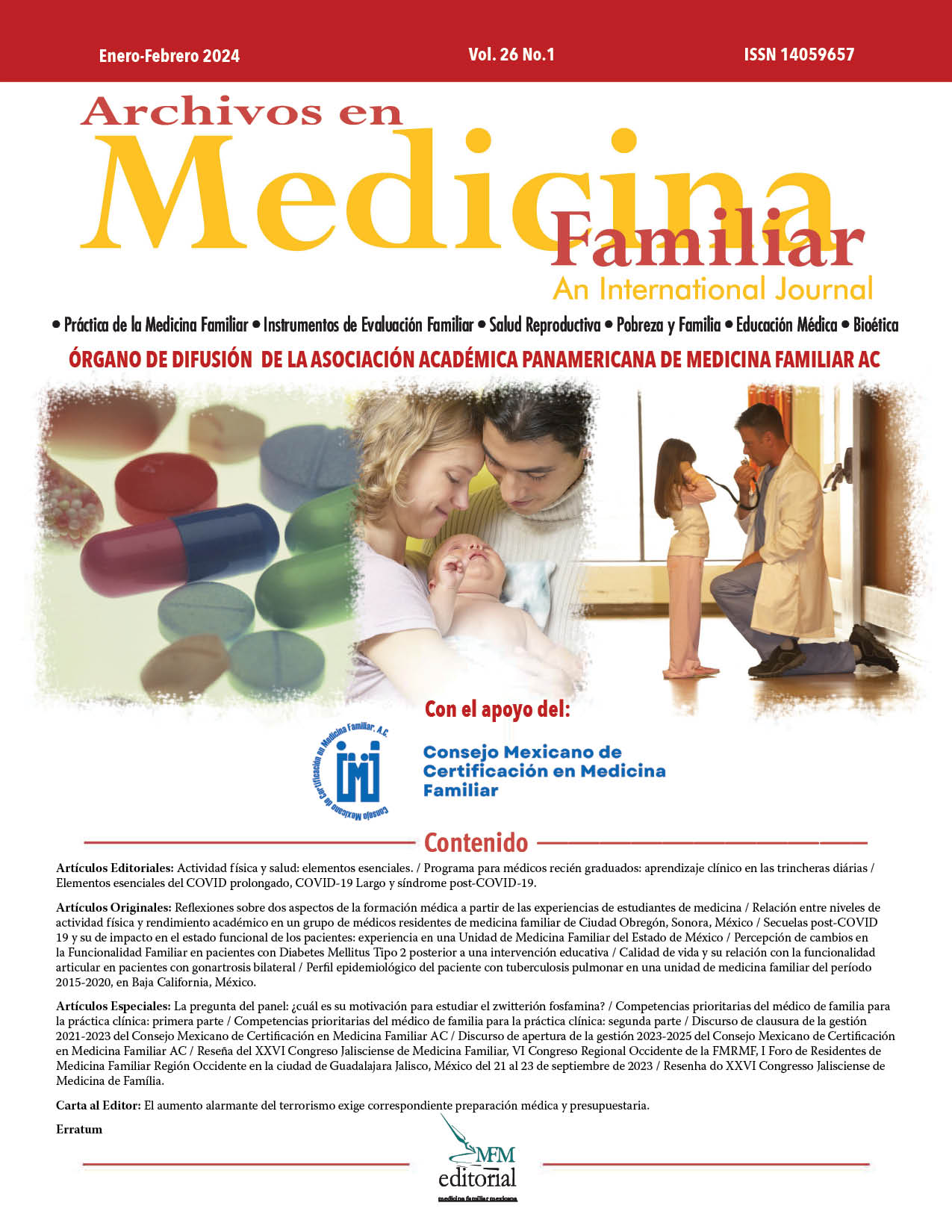Quality of Life and its Relationship with Joint Functionality in Patients with Bilateral Gonarthrosis
DOI:
https://doi.org/10.62514/amf.v26i1.13Keywords:
Gonarthrosis, Quality of life, Joint functionality.Abstract
Objective: To analyze the relationship between quality of life and joint functionality in patients diagnosed with bilateral gonarthrosis. Methods: Prospective, cross-sectional, analytical and observational study. Non-probability sampling. Sample of 72 patients to whom the Western Ontario and McMaster Universities Osteoarthritis Index (WOMAC) scale for joint functionality and the SF36 questionnaire for quality of life were applied. Results: The minimum age was 60 years, the maximum 70 and an average of 65 years. 40.3% were men and 59.7% women. Regarding the quality of life 22.2% poor, 55.6% regular, 20.8% good and 1.4% excellent quality of life respectively. Joint functionality was 91.7% severe, 5.6% moderate and 2.8% did not report any condition. The relationship between quality of life and joint functionality was sought with χ² p <0.000. Conclusions: It was observed that patients with greater functional impairment had a regular and poor quality of life. It is important to specify that those patients with a severe functional condition were referred to their family doctor to consider their reassessment with the Traumatology and Orthopedics service.

